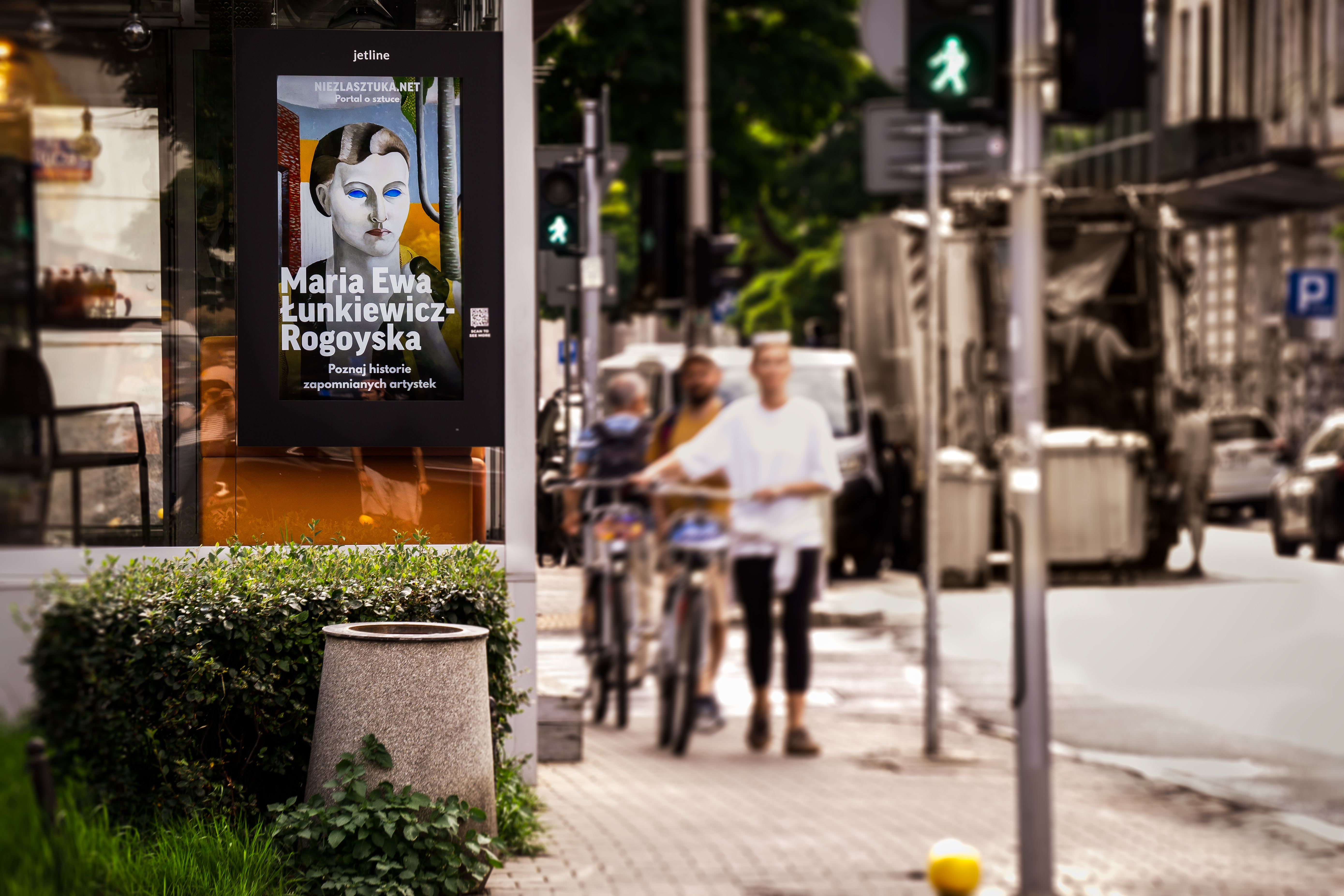On MORE Screens: Art is not just HIM. It's HER Too.
When we think about art history, our imagination most often turns to names that have become symbols of eras – great masters, visionaries, creators of the canon.
It just so happens that we see his face in textbooks, museums, and exhibitions.
Less often – hers.
Sometimes we struggle to name even a few Polish female painters.
Yet, women also created. They studied at academies, painted with passion and full awareness that their presence in the art world was not so obvious. They often acted against social expectations, without institutional support. Sometimes they gained recognition during their lifetime – but quickly disappeared from catalogs, collections, and memory.
Because it's one thing to be noticed, and another to be remembered.
That's why on MORE screens – in public spaces – together with the Niezła Sztuka Foundation, we are presenting the campaign "Art is not just HIM. It's HER too." Self-portraits of female artists have appeared on our screens, bringing them back to the gaze of passersby – and perhaps most importantly – restoring their memory.

Campaign Heroines
Each of them had her own voice, style, and developed artistic identity. Their work transcended the boundaries of styles and conventions:
- Anna Bilińska-Bohdanowicz (1857–1893) – a painter who studied at the Académie Julian in Paris. She gained international recognition, but her first major exhibition in Poland did not take place due to her premature death.
- Olga Boznańska (1865–1940) – associated with Munich and Paris, she participated in the Venice Biennale, exhibited in London, New York, and Vienna. Her style balanced between Impressionism and Symbolism – and was entirely her own.
- Mela Muter (1876–1967) – a member of the Société Nationale des Beaux-Arts, active in the Parisian bohemia. She painted social scenes, portraits, and landscapes. Her works were exhibited in Barcelona, Toulouse, and Geneva, among other places.
- Maria Ewa Łunkiewicz-Rogoyska (1895–1967) – co-founder of the avant-garde Praesens Group, lecturer at the Warsaw Academy of Fine Arts, author of murals and set designs. She created in the spirit of constructivism, organizing international exhibitions.
Why Did They Disappear?
Although many of these artists achieved success during their lifetime, exhibited abroad, and won awards, their names did not survive in popular consciousness. Why?
Because women's art long functioned as a separate category – less serious, less "important."
>Their work was described through the prism of "sensitivity," not craftsmanship.
>Their exhibitions were reviewed with condescension. Their works – valued lower.
Lack of institutional support, influential patrons, male professional networks – meant that after their deaths, paintings ended up in storage, forgotten. And their names? Sometimes they didn't even sign their own works – because "that's how it was."
Artist or Homemaker?
At the turn of the 19th and 20th centuries, a woman was expected to be a wife and mother. Art – if at all – was supposed to be her hobby, not a profession. Society didn't ask: "Do you have talent?“, but: "Is it appropriate?”
Was she allowed to paint nudes?
Should she choose a brush instead of children?
Could one even make a living from painting – as a woman?
They answered in their own way.
They painted. They exhibited. They studied.
And they deserve to have their names resonate again today.
Campaign in Public Space
MORE screens are important communication channels. We are collaborating with the Niezła Sztuka Foundation to transform public spaces into an open art gallery, showcasing what has remained in the shadows for years.
Art is not just HIM. It's HER too.
Unindifferent. Equal. Visible.

